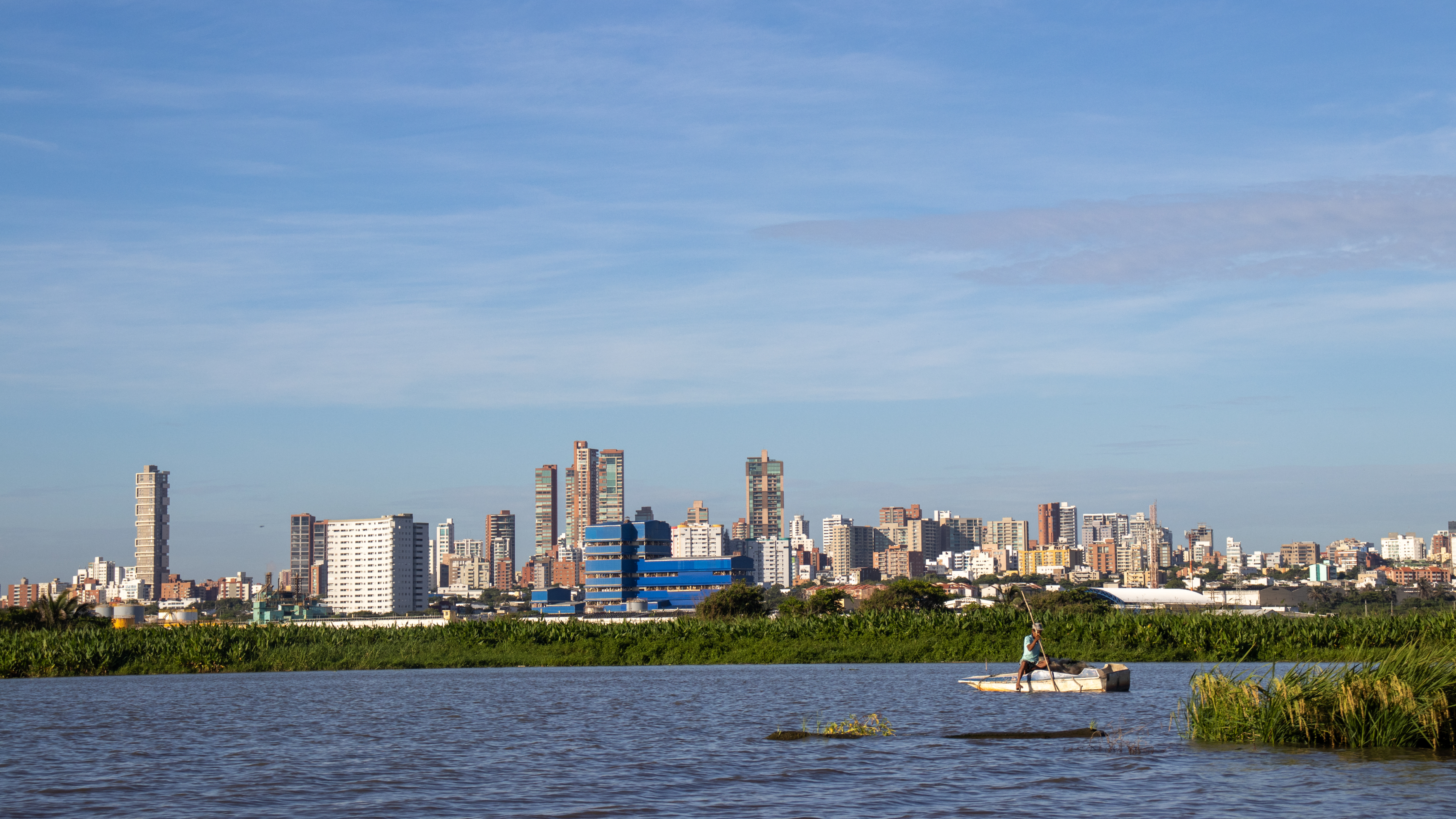Climate crisis could shift hurricanes toward more populated cities

'Hurricanes and cyclones could form and intensify in mid-latitudes this century, putting major population centers like New York, Boston and Beijing at risk.' Image: UNSPLASH/John Middelkoop
- As the climate crisis continues, hurricanes could become more common.
- According to Yale physicist Joshua Studholme, the 21st Century's tropical cyclones are expected to appear in a wider range of latitudes; this has not occurred for 3 million years.
- However, it is still possible to avoid worst case scenarios by keeping temperature increases to a minimum.
In September of last year, heavy rainfall from Hurricane Ida reached the Northeastern U.S., killing at least eight people and flooding enough New York City subway stations that the whole system had to shut down.
Now, a new study warns that scenes like this could become more common as the climate crisis continues. The research, published in Nature Geoscience, found that hurricanes and cyclones could form and intensify in mid-latitudes this century, putting major population centers like New York, Boston and Beijing at risk.
“This research predicts that the 21st century’s tropical cyclones will likely occur over a wider range of latitudes than has been the case on Earth for the last 3 million years,” study author and Yale University physicist Joshua Studholme said, as the Hartford Courant reported.

Tropical cyclones, as their name suggests, typically form over the warm waters of tropical oceans. Storms like Ida that form in the Caribbean and then move north can still do massive damage to mid-latitude population centers. But the new study suggests that these destructive storms could actually begin over mid-latitude waters. One example was 2020’s subtropical storm Alpha, which was the first ever tropical cyclone to make landfall in Portugal.
These dangerous storms could shift because the difference in temperature between the tropics and the poles will decrease as the climate warms, weakening the jet stream that typically keeps hurricanes and cyclones near the equator.
“As the climate warms, that sort of jet stream activity that happens in the middle latitude will weaken and in extreme cases split, allowing this sort of cyclone formation to occur,” Studholme told BBC News.
The researchers based their predictions on satellite data, future weather and climate projects and the physics behind atmospheric convection and planetary winds, the Hartford Courant explained. They also looked at models of the distant past, when Earth was warmer, such as the Eocene (56 million to 34 million years ago) and the Pliocene (5.3 million to 2.6 million years ago). Those models showed tropical cyclones forming and intensifying at mid-latitudes.
There is debate as to whether or not the climate crisis will increase the total number of hurricanes, but there is a growing consensus that it is making the ones that do form more intense. The new research adds to the understanding of what tropical storms could look like through the end of the current century.
“There are large uncertainties in how tropical cyclones will change in the future,” study co-author and Yale professor of oceanic and atmospheric sciences Alexey Fedorov said, as the Hartford Courant reported. “However, multiple lines of evidence indicate that we could see more tropical cyclones in mid-latitudes, even if the total frequency of tropical cyclones does not increase, which is still actively debated. Compounded by the expected increase in average tropical cyclone intensity, this finding implies higher risks due to tropical cyclones in Earth’s warming climate.”
What’s the World Economic Forum doing about climate change?
However, the study authors said it was still possible to avoid the worst of this future.
“The control over this is the temperature gradient between the tropics and the poles, and that’s very tightly linked to overall climate change,” Studholme told BBC News. “By end of this century, the difference in that gradient between a high emission scenario and a low emission scenario is dramatic. That can be very significant in terms of how these hurricanes play out.”
Don't miss any update on this topic
Create a free account and access your personalized content collection with our latest publications and analyses.
License and Republishing
World Economic Forum articles may be republished in accordance with the Creative Commons Attribution-NonCommercial-NoDerivatives 4.0 International Public License, and in accordance with our Terms of Use.
The views expressed in this article are those of the author alone and not the World Economic Forum.
Stay up to date:
Climate Indicators
Related topics:
Forum Stories newsletter
Bringing you weekly curated insights and analysis on the global issues that matter.
More on Urban TransformationSee all
Simon Torkington and David Elliott
November 27, 2025







